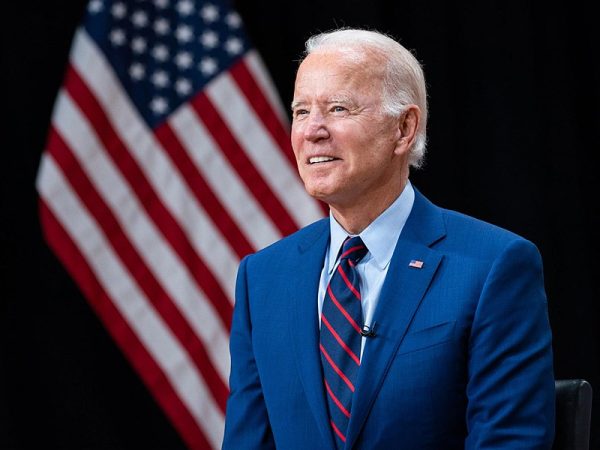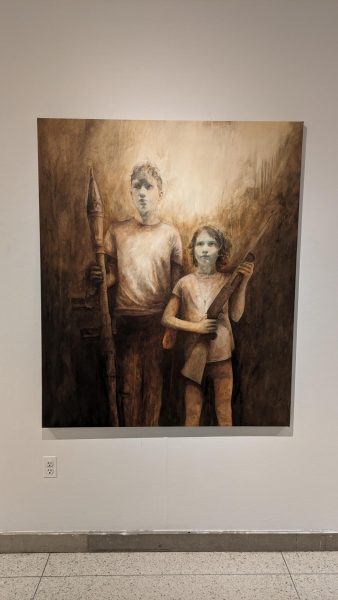Trump, making race wars great again?
Many of Donald Trump’s critics have called his immigration ideas racist, fascist, even anti-American. Former Massachusetts Governor Bill Weld, in an interview with the New York Times, compared Trump’s plan to remove undocumented immigrants to Kristallnacht, the 1938 night when Nazis destroyed Jewish homes, synagogues and businesses, and is widely recognized by historians as the beginning of the Holocaust.
Yet it is not necessary to look to other countries—let alone Nazi Germany—to find historical precedent for Trump’s immigration proposals. Instead, Trump’s policy ideas symbolize a history of American xenophobia.
A major political party in the 19th century specifically focused its platform on opposition to immigrants and the Catholic Church. In 1854, the American Party, known commonly as the Know-Nothings, won nearly a quarter of the seats in the House of Representatives using its animosity toward Irish and German immigrants, rooted in the hatred of Catholics.
American nativism did not die down from there. Just thirty years after the Know-Nothings rose to and fell from political relevance, the federal government passed the Chinese Exclusion Act of 1882. A number of factors led to this, most prominently the exploitation of Chinese laborers to work for less pay than American workers.
Historian Clive Webb, largest mass lynching in American history was against Italian-Americans, less than a decade after the Chinese Exclusion Act. Eleven Italian immigrants were brutally murdered on March 14, 1891, in New Orleans. The mob alleged that the men murdered a police officer who claimed he had been shot by “Dagoes.” However, the men had been acquitted by a jury, which further infuriated the mob.
According to historian Gary Gerstle, fifteen years later Theodore Roosevelt’s Gentlemen’s Agreement of 1907 stated that Japan would not allow its citizens to emigrate to the United States. This was extended a decade later when both houses of Congress overrode a veto by Woodrow Wilson to formally ban nearly all Asian immigrants. The Asiatic Barred Zone spanned from the Ottoman Empire to nearly the end of China, as well as the Pacific Islands.
Further laws during and after the first World War barred southern and eastern European immigration, providing that Jewish emigrants would be unable to gain American citizenship.
Perhaps the most egregious example of American nativism occurred during World War II, when Franklin Roosevelt’s Executive Order 9066 ordered everyone in the U.S. of Japanese descent, including those who were American citizens, into internment camps. Over 120,000 Japanese-Americans were held in these camps for the duration of the war.
In 1990, the U.S. apologized for holding its own citizens in internment camps due to baseless, racially-motivated fear and hatred.
Perhaps the group of immigrants most welcomed by Americans were African-Americans, who were involuntarily loaded on ships full of filth and disease to be sent to the Americas for the purpose of being enslaved.
Between the 15th century and 1807, when Congress formally banned the international slave trade, nearly a half million Africans were involuntarily sent to the U.S. to become slaves. Even after the slave trade was banned, it took almost 60 years and a bloody Civil War to end the practice of slavery in the United States, 89 years after Thomas Jefferson, who owned human beings, declared “all men were created equal.”
Of course, the end of slavery did not signify freedom for African-Americans, as sharecropping, convict leasing, segregation and Jim Crow laws dominated U.S. politics until the mid-20th century, and less explicit forms of racism impact African-Americans today.
The history of the U.S. is not the story of boundless success, let alone boundless success for all groups of people.
So when Trump promises to “make America great again,” is he referring to the mid 19th century, when an entire race of people was held in bondage, nativism had a significant political party and anti-Catholic rhetoric was a viable political strategy?
Or perhaps the early 20th century, when the federal government barred Asians from becoming American citizens, interned its own citizens out of unwarranted racial fear and permitted a significant number of its states to pass and enforce laws simply designed to segregate and oppress African-Americans?
Certainly, Trump is not speaking of the mid-late 20th century, when, according to the Southern Poverty Law Center, 41 men and women gave their lives to fight for the simple idea that African-Americans should be treated as people.
There is no one specific period where America was objectively “great.” Instead, what makes America great is its optimism. We were the first country in the modern era to found ourselves on the belief that “all men are created equal” — a radical idea in 1776.
We certainly have failed to live up to the promise, as evidenced by our xenophobia and discrimination, both past and present. But that does not mean that we should stop striving to redeem the Framers’ promise.
America is optimistic, and we deserve a president who shares this basic belief. Donald Trump does not, and he does not understand what makes America great.




